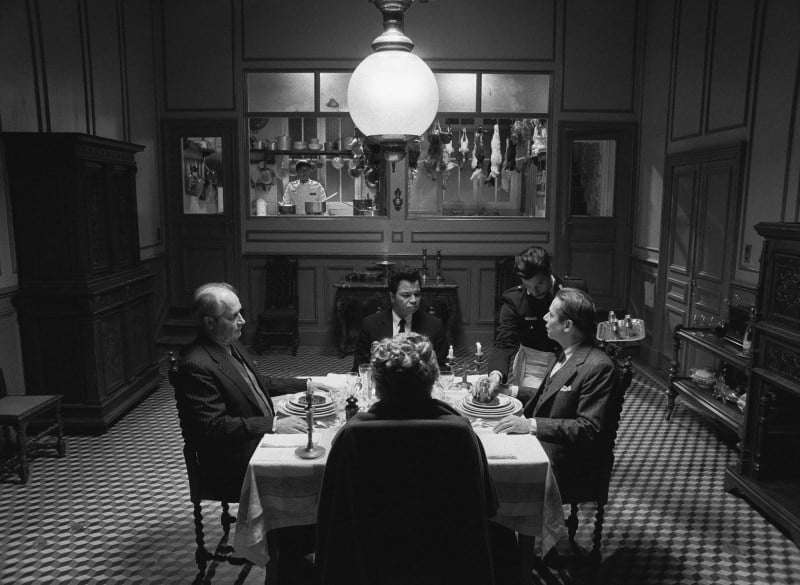At this point, Wes Anderson’s style is easily recognizable. In his 10th feature film, Anderson plays with the same styles of scenery and writing that are displayed in nearly all of his prior work: dollhouse-like sets, shot in a near-perfect symmetrical fashion and paired with witty dialogue spoken by Hollywood A-listers. Collaborating once again with cinematographer Robert Yeoman and casting mostly his regulars (Owen Wilson, Tilda Swinton, Frances McDormand and Bill Murray, to name a few), Anderson is all too predictable in this movie — essentially bringing a traveling theater company to the silver screen. But it’s the stylistic deviations from prior films that make “The French Dispatch” one of the more inaccessible installments in the auteur’s catalog.
Inspired by The New Yorker, “The French Dispatch” depicts the events of three different articles (labeled as “Story #1,” “Story #2” and “Story #3”) in a magazine’s final issue following the death of its editor-in-chief. Each of these stories is distinct from the others because it is presented through its respective journalist’s unique point of view. “The Concrete Masterpiece” tells the story of a convicted murderer who becomes a world-famous artist (Benicio del Toro) with the inspiration of his guard-turned-lover (Lea Seydoux) and help from his fellow inmate (Adrien Brody). “Revisions to a Manifesto” pokes fun at the idea of journalistic integrity, with a well-reputed reporter (Frances McDormand) having romantic relations with the subject of her story (Timothée Chalamet), as well as aiding him in his student-led revolution. “The Private Dining Room of the Police Commissioner” starts as a simple food review by critic Roebuck Wright (Jeffrey Wright) but quickly turns into a cat-and-mouse game after the kidnapping of the local police commissioner’s son.
While each of these subplots could have been an entire film on its own, Anderson opted for an anthology — the very first in his career. This decision, though admirably bold, adds credence to the biggest critique he has received over the years: that his movies lack substance in favor of style. Unfortunately, “The French Dispatch” indeed suffers from this issue of stylistic excess and clocks in at one hour and 43 minutes.
Without a doubt, the movie is aesthetically pleasing and filled with top-notch performances, especially from del Toro and Wright. However, there are a few choices that could steer viewers away from fully enjoying the film, including those who aren’t already familiar with Anderson’s work. The majority of the film is in black and white, with color only being used to bring the plot back to the present and emphasize important moments in scenes set in the past. While there is nothing wrong with relying on a black and white color scheme, the fact that this is a Wes Anderson movie means that there were many missed opportunities where color would have made visuals even better. One example is in “Story #2,” when Chalamet flees from a large gathering of fellow protesters altercating with the police in a pivotal moment in their revolution. Had Anderson infused the scene with color, the chaos encapsulated within could have been more visually amplified. After all, the use of vibrant colors is a key component of Anderson’s work, and in some sense, it is what he’s known for. While Anderson’s implicit desire to authentically create a classic 1960s French cinema-inspired movie can be appreciated, the 1:37:1 aspect ratio would have been enough to accomplish this. Had it been most other directors, maybe the choice of black and white would have made sense, but this is Wes Anderson. Not only are vibrant imagery and pastel-colored sets to be expected, but they are vital to the story itself.
Because the film is split into three unique narratives, there are issues with its overall pacing. Known for his exceptionally quirky writing and storytelling, Anderson has to sacrifice some of this quirkiness to keep each of the plots moving quickly enough for there to be time for the others. There is a strong reliance on outside narration (in the words of the respective journalists and their articles) that are at times dull. And even here, in a film about journalism, Anderson’s voice and word choice remain consistent even though they should differ between the three individual writers whose points of view alternate. Consequently, the characters themselves can at times feel lacking in depth. After all, we are only with each subgroup of the film’s ensemble for a third of the movie. Thus, there simply isn’t enough space to give backstory and explanation to everyone’s goals and motives.
Rarely being reminded that these stories are part of the overseeing end of a magazine, the audience can easily forget what exactly links these articles. This lack of cohesion inherent in Anderson’s anthology style violates viewers’ expectations of filmic coherence and therefore negates the choice of film as a medium. Yes, “The French Dispatch” is a clear love letter to journalism, as the director has said himself, but some viewers will still wonder what it stands for. If past well-received projects like “The Grand Budapest Hotel” can be described as an adventure, “Rushmore” as a love story and “Fantastic Mr. Fox” as a deeply psychological investigation of identity, “The French Dispatch” doesn’t offer much except for the self-indulgent vision of a highly accomplished filmmaker. For fans and film geeks, that may be more than enough, but for the regular moviegoer, don’t expect this to make you fall in love with Wes Anderson.
Editor’s Note: This article is a review and includes subjective opinions, thoughts and critiques.
